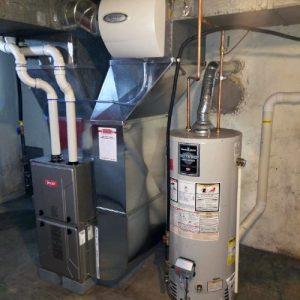Blog Categories
- Appliances Four
- Athletic Seating
- Auto Helpers
- Automated Stock Rooms
- Chocolate Four
- CuraFlo
- Damaged Goods Dating
- Flood Insurance Four
- Game Addict
- Hi Tech Pest Control
- HVAC Four
- Medical Labels Four
- Mental Health Four
- National CWS
- Promotional Ideas
- Seguros Lara Insurance
- Stem Cell Worx
- The Hidden Truth
- The Last Refuge
- The Mozilla Blog
- Video Editing Four
- Web Design Dev
- Website Development Four
- Windows Blog
comparing types of furnaces

With the various types of furnaces available today, homeowners have more choices than ever. The decision usually starts with which fuel source makes the most sense for the home – gas, fuel oil, or electricity. No matter which type is best for you, there’s a furnace designed to fit your needs.
All of these heating system types provide warm comfort for your home, but the best choice is often based on geographic location, the heating and cooling needs of your home, and heating fuel pricing and availability in your area. Furnaces also vary by energy efficiency ratings, and in many parts of the country are a core component in a home’s air conditioning system. In the sections that follow, we will compare the different furnaces with respect to the advantages and disadvantages of each.
GAS VS ELECTRIC FURNACE The gas vs electric furnace comparison obviously starts with a fuel source, but there are some significant differences between the two in terms of installation and operating costs, expected lifetime, and climates for which they are best suited. Natural gas furnaces typically heat the home faster because they can generate warm air at higher temperatures than an electric heat system. Because of this and due to generally lower costs for natural gas, these furnaces are best suited for colder, northern climates where the heating season is longer and more intense. Keep in mind that other differences between gas and electric furnaces include installation and maintenance costs and expected lifespan. In these areas, electric models can have the advantage. Electric furnaces don’t require venting systems or gas hookups and can cost less to purchase and install. Gas furnaces also require more standard maintenance, so those costs will be higher as well. Electric units are often quieter than gas models and often can last longer too.
GAS VS OIL HEATING Making the decision between gas vs oil heating often comes down to the availability of the fuel source. For example, in rural areas and some older neighborhoods, natural gas pipelines aren’t, making oil heating a good option. Both use internal combustion to create heat, and both are very effective options for colder climates. However, they do have a number of differences, that we will highlight here: Natural gas furnaces typically have a lower initial cost for the furnace itself, and the gas is supplied through a pipeline infrastructure which may not be available in certain areas. Oil-burning furnaces convert more heat per BTU than other heating sources, however, they typically have slightly lower AFUE efficiency ratings than natural gas models and they also require a storage tank for fuel which can add cost to an oil furnace installation. Both types of furnaces require regular maintenance, but gas furnaces don’t have the soot and dirt buildup of oil furnaces which can add time and cost for professional cleaning.
OIL FURNACE VS ELECTRIC FURNACE Looking at the oil furnace vs electric furnace comparison, let’s start by analyzing upfront costs. The average cost, including furnace installation, is about $400 – $600 more for an oil furnace. If you need to also install a tank for the fuel oil, add another roughly two thousand dollars for the oil furnace. Both types of furnaces are often installed as a central, forced air type of system. In terms of comfort, fuel oil-heated homes heat up faster because oil furnaces create higher temperatures than electric furnaces. And, oil furnaces tend to be a better choice for colder climates, while electric furnaces are more commonly used in warmer climates with less need for heating. Looking at long-term costs, fuel oil prices tend to fluctuate more than electricity. For 2022, experts were predicting the cost of heating with fuel oil vs electric heat to be very close – around $1200 per heating season. However, cost comparisons for the winter of 2014-2015 were quite different – an average of $960 for electric heat vs $1851 for heating oil.
comparing types of furnaces
The post comparing types of furnaces appeared first on KDM Gas.
Re Posted From: comparing types of furnaces

With the various types of furnaces available today, homeowners have more choices than ever. The decision usually starts with which fuel source makes the most sense for the home – gas, fuel oil, or electricity. No matter which type is best for you, there’s a furnace designed to fit your needs.
All of these heating system types provide warm comfort for your home, but the best choice is often based on geographic location, the heating and cooling needs of your home, and heating fuel pricing and availability in your area. Furnaces also vary by energy efficiency ratings, and in many parts of the country are a core component in a home’s air conditioning system. In the sections that follow, we will compare the different furnaces with respect to the advantages and disadvantages of each.
GAS VS ELECTRIC FURNACE The gas vs electric furnace comparison obviously starts with a fuel source, but there are some significant differences between the two in terms of installation and operating costs, expected lifetime, and climates for which they are best suited. Natural gas furnaces typically heat the home faster because they can generate warm air at higher temperatures than an electric heat system. Because of this and due to generally lower costs for natural gas, these furnaces are best suited for colder, northern climates where the heating season is longer and more intense. Keep in mind that other differences between gas and electric furnaces include installation and maintenance costs and expected lifespan. In these areas, electric models can have the advantage. Electric furnaces don’t require venting systems or gas hookups and can cost less to purchase and install. Gas furnaces also require more standard maintenance, so those costs will be higher as well. Electric units are often quieter than gas models and often can last longer too.
GAS VS OIL HEATING Making the decision between gas vs oil heating often comes down to the availability of the fuel source. For example, in rural areas and some older neighborhoods, natural gas pipelines aren’t, making oil heating a good option. Both use internal combustion to create heat, and both are very effective options for colder climates. However, they do have a number of differences, that we will highlight here: Natural gas furnaces typically have a lower initial cost for the furnace itself, and the gas is supplied through a pipeline infrastructure which may not be available in certain areas. Oil-burning furnaces convert more heat per BTU than other heating sources, however, they typically have slightly lower AFUE efficiency ratings than natural gas models and they also require a storage tank for fuel which can add cost to an oil furnace installation. Both types of furnaces require regular maintenance, but gas furnaces don’t have the soot and dirt buildup of oil furnaces which can add time and cost for professional cleaning.
OIL FURNACE VS ELECTRIC FURNACE Looking at the oil furnace vs electric furnace comparison, let’s start by analyzing upfront costs. The average cost, including furnace installation, is about $400 – $600 more for an oil furnace. If you need to also install a tank for the fuel oil, add another roughly two thousand dollars for the oil furnace. Both types of furnaces are often installed as a central, forced air type of system. In terms of comfort, fuel oil-heated homes heat up faster because oil furnaces create higher temperatures than electric furnaces. And, oil furnaces tend to be a better choice for colder climates, while electric furnaces are more commonly used in warmer climates with less need for heating. Looking at long-term costs, fuel oil prices tend to fluctuate more than electricity. For 2022, experts were predicting the cost of heating with fuel oil vs electric heat to be very close – around $1200 per heating season. However, cost comparisons for the winter of 2014-2015 were quite different – an average of $960 for electric heat vs $1851 for heating oil.
comparing types of furnaces
The post comparing types of furnaces appeared first on KDM Gas.
Re Posted From: comparing types of furnaces

